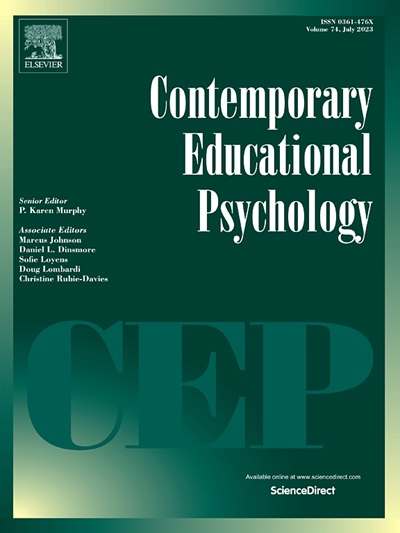Make or break STEM course experiences: Profiles of situated expectancy, value, cost, and major intentions
IF 3.8
1区 心理学
Q1 PSYCHOLOGY, EDUCATIONAL
引用次数: 0
Abstract
Persistent attrition and underrepresentation issues in STEM fields have complex causes that involve cultural, contextual, and individual motivational factors. To better understand how students make decisions about persisting in STEM, this study used a person-oriented approach to examine co-occurring patterns of academic self-efficacy, task values, perceived costs, and changes in major intentions during introductory STEM courses. Instead of treating motivational beliefs and behavioral intentions as separate or sequential—as is common in variable-oriented approaches—we modeled how these constructs cluster together during key decision-making periods. This approach allowed us to explore how students experience these beliefs in real time and how common or rare different motivational-intentional configurations are. We identified four distinct motivational profiles of expectancy, value, cost, and major intention changes and examined how students’ sense of belonging with professors, classmates, and the university predicted profile membership. Belonging with professors and university distinguished the beneficial profile from maladaptive profiles. The Confident and Interested, Stable Intentions profile was most adaptive for motivation and long-term persistence. In contrast, Moderate Mixed Motivation, Invited In, Value Focused Mixed Motivation, Weeded Out, and Cost Focused Mixed Motivation, Weeded Out profiles showed an overrepresentation of women and students from racially minoritized groups, with lower probabilities of pursuing majors related to their course. These findings underscore the value of capturing how motivational beliefs and decisions co-occur, emphasizing the need to promote belonging and provide tailored support to enhance STEM persistence.
成就或破坏STEM课程经验:定位期望,价值,成本和主要意图的概况
STEM领域持续的人员流失和代表性不足问题有复杂的原因,涉及文化、背景和个人动机因素。为了更好地理解学生是如何做出坚持STEM的决定的,本研究采用了一种以人为本的方法来研究STEM入门课程中学术自我效能感、任务价值、感知成本和主要意图变化的共同发生模式。我们没有将动机信念和行为意图分开或顺序处理——这在面向变量的方法中很常见——而是对这些结构如何在关键决策阶段聚集在一起进行了建模。这种方法使我们能够探索学生如何实时体验这些信念,以及不同的动机-意图配置有多常见或罕见。我们确定了期望、价值、成本和主要意向变化的四种不同的动机概况,并研究了学生对教授、同学和大学的归属感如何预测概况成员。与教授和大学的关系区分了有益的形象和不适应的形象。自信、感兴趣、稳定的意向最适合于动机和长期坚持。相比之下,适度混合动机、受邀加入、以价值为中心的混合动机、被淘汰和以成本为中心的混合动机、被淘汰的概况显示,女性和少数族裔学生的比例过高,她们选择与其课程相关专业的可能性较低。这些发现强调了捕捉动机信念和决策如何共同发生的价值,强调了促进归属感和提供量身定制的支持以增强STEM持久性的必要性。
本文章由计算机程序翻译,如有差异,请以英文原文为准。
求助全文
约1分钟内获得全文
求助全文
来源期刊

Contemporary Educational Psychology
PSYCHOLOGY, EDUCATIONAL-
CiteScore
16.50
自引率
3.90%
发文量
74
期刊介绍:
Contemporary Educational Psychology is a scholarly journal that publishes empirical research from various parts of the world. The research aims to substantially advance, extend, or re-envision the ongoing discourse in educational psychology research and practice. To be considered for publication, manuscripts must be well-grounded in a comprehensive theoretical and empirical framework. This framework should raise critical and timely questions that educational psychology currently faces. Additionally, the questions asked should be closely related to the chosen methodological approach, and the authors should provide actionable implications for education research and practice. The journal seeks to publish manuscripts that offer cutting-edge theoretical and methodological perspectives on critical and timely education questions.
The journal is abstracted and indexed in various databases, including Contents Pages in Education, Australian Educational Index, Current Contents, EBSCOhost, Education Index, ERA, PsycINFO, Sociology of Education Abstracts, PubMed/Medline, BIOSIS Previews, and others.
 求助内容:
求助内容: 应助结果提醒方式:
应助结果提醒方式:


